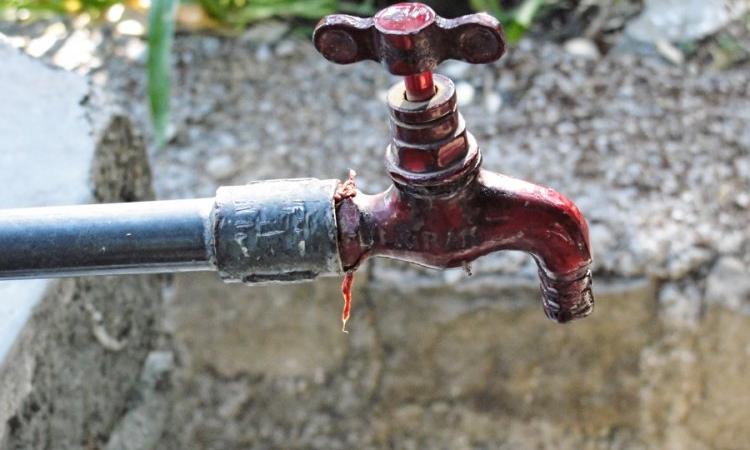
Concerned with contaminated water sources in rural areas, the Centre plans to provide piped water supply (classified as an improved water source by the WHO & UNICEF Joint Monitoring Report) to 80 percent rural households in the country by 2022. Better access to drinking water is certainly good news. But does better access mean the drinking water is safe, too?
This study “Variations of drinking water quality in?uenced by seasons and household interventions: A case study from rural Maharashtra, India” published in the journal Environments finds that access to piped water supply to households in the rural villages in Maharashtra does not guarantee that the water is free from contamination.
The condition of the raw water source and its watershed, seasonal variations, the efficiency of the panchayat water treatment system, and more importantly, household water treatment and storage (HWTS) and water, sanitation and hygiene (WASH) practices affect water quality and need attention.
How does the water get managed at the village level?
Drinking water is sourced from open wells and borewells and is electrically pumped through pipes to an elevated storage tank or an open well, treated with chlorine for disinfection and then distributed to households through taps around the village under gravitational pressure.
The gram panchayat and the sarpanch are responsible for the management of water supply, treatment and day-to-day maintenance. The actual implementation is done by the “waterman”, who is from the same village and is paid by the gram panchayat. The waterman has received training to do his duties, including chlorination practices, from the health department at the block level. The health department is in charge of taking monthly water samples and monitoring the water quality.
How safe is the water?
While piped water is used as a drinking water source by most people in villages, the water supply is not continuous and varies between half to two hours daily or every second day. The villagers have to withdraw water when available and store it until the next supply phase, increasing chances of contamination.
Households access water from borewells, open wells and tankers and even surface water sources during situations where the water supply is not continuous, when the pressure in the pipes is low or when there are technical difficulties and during summer months when water is scarce.
Water quality tests reveal that water from surface water sources such as ponds, tanks, rivers has the lowest water quality while that from the open wells and borewells is also contaminated due to poor sanitation, insuf?cient treatment of urban and industrial wastewater, and lack of watershed protection measures.
Even improved sources such as piped water supply show faecal contamination. Poor monitoring mechanisms for water quality, irregular chlorine treatment by the waterman and overdependence on the waterman for the maintenance of water quality increase chances of contamination. The risk of contamination gets worse during the monsoons.
Poor water storage and handling and contamination risk
People use separate containers for transporting and storing water for domestic use and drinking. Drinking water containers are mostly made of metal and are kept at an elevated position and covered. They are cleaned every day before re?lling using soap, followed by wood ash, cleaning powder, and mud. However, transport vessels are cleaned less frequently. When they are cleaned, it is done only with water and no scrubbing agents, increasing the risk of contamination.
A cup is mostly used for drawing water from the containers; in a few cases, a spigot or a ladle is used. While using the cup, people dip their hands in the water. Only around half of the population says that they wash their hands before taking out water which again increases chances of contamination. Although many people say that they wash their hands with soap before eating, very few wash their hands after defaecating, further increasing chances of contamination.
Local perceptions of quality and irregular water treatment
Chemical treatment of water like adding bleach, chlorine, or aluminium hydroxide is practised by most of the households in the village followed by ?ltration through a cloth. A few households also use water ?lters, boiling and “stand and settle” treatment. While boiling and chemical treatment effectively reduce microbiological contamination, the other treatments are only effective in decreasing the turbidity and in removing the particles. Chlorine solution is obtained free of cost from the gram panchayat, while the other interventions have to be carried out by households themselves.
Most households do not follow water treatment regularly which vary according to seasons. A quarter of the households have an open sewage system increasing the risk of contamination of water sources.
Water treatment, storage and WASH practices among people are found to be influenced by education, economic status and access to facilities and infrastructure available in the villages.
Importance of community awareness and involvement
The study concludes that:
- Increasing community awareness about HWTS and WASH practices by encouraging people to clean transport vessels, wash hands after defaecation, practice regular and seasonal treatment of water, understand the different methods of water treatment are crucial to prevent water contamination in the villages.
- Stronger community involvement through interventions such as distributing test kits to households to check for chlorination, engaging school children in water monitoring, volunteering for water disinfection in the absence of waterman, regular quality checks and feedback are essential to bring about a change in the situation.
- Implementing watershed protection measures including improvement in sanitation and wastewater treatment can help improve the quality of raw water derived from surface water sources. Improved construction designs for open wells can be introduced to prevent bacteriological contamination.
A copy of the paper can be downloaded from below:
/articles/drinking-water-access-does-not-mean-safety